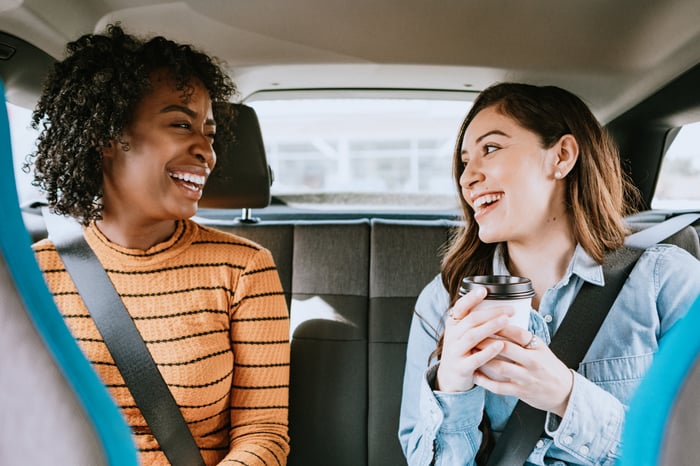After a long wait, Tesla (TSLA 0.15%) finally debuted its robotaxi on Thursday night.
CEO Elon Musk arrived on the Warner Bros. soundstage in Burbank, California, as a passenger in the robotaxi, which he calls a Cybercab. It comes without a steering wheel or pedals, making it a strictly autonomous vehicle (AV).
Musk said the vehicle would allow for unsupervised full self-driving (FSD), differentiating it from the supervised FSD he often refers to in existing Tesla models. He said the Cybercab would cost less than $30,000 and was optimistic it would go into production in 2026. He also showed off the Robovan, a similar AV that can hold up to 20 passengers.
Wall Street's response to the news was mixed. Some analysts cheered the news as Wedbush called the Cybercab "very impressive," and Bank of America said the event "lived up to the hype." Others balked at the launch, however, saying it was underwhelming
When investors got the chance to weigh in on the event, they also seemed to be underwhelmed: The stock promptly fell in premarket trading on Friday and stayed down, trading down 8% for most of the session.
Investors seemed to want more from the event, including concrete details about a production ramp-up and information about regulatory clearance, which it will have to obtain state by state.
What was also noteworthy about the investor response was that ride-sharing leaders Uber Technologies and Lyft soared on the news.

Image source: Getty Images.
Tesla dives, Uber flies
Uber shares jumped 10% as investors seemed to breathe a sigh of relief that potential disruption from the Cybercab isn't imminent.
For the ride-hailing companies, the biggest competitive advantage at this point is the network of drivers they have, and a new technology that renders drivers irrelevant is likely to affect Uber and Lyft. Tesla also has the ability to mass produce those vehicles in a way that many AV companies can't.
Uber has experimented with autonomous vehicles on the road but suspended its AV program in Arizona after a pedestrian fatality in 2018. That vehicle had a human assistant behind the wheel, but there wasn't enough time to respond.
Since then, Uber has revamped its AV strategy, partnering with other platforms like Alphabet's Waymo and GM's Cruise, allowing it to neutralize the threat from other AVs, and even tap into the potential benefit from them. Earlier this month, Uber also announced a multiyear strategic partnership with Avride, an AV start-up in Austin, Texas, showing it's taking a multi-pronged strategy to AVs.
Nearly a decade ago, many industry insiders predicted that AVs would soon go mainstream. Regulatory red tape and safety concerns have prevented that from happening, but Waymo has deployed AVs in cities like San Francisco, Phoenix, Los Angeles, and Austin.
GM's Cruise is operating in Phoenix currently after the automaker took its vehicles off the road in San Francisco following an accident.
Is Tesla the biggest threat to Uber?
While the Cybercab event might have given Uber a reprieve, it also makes it clear that AVs continue to make progress toward reality.
In fact, some Uber drivers are already taking advantage of Tesla's FSD capabilities, using it to work longer hours, sharing some of the burden of a long shift behind the wheel.
Autonomous vehicles could still be years away, but the most important factor for the long-term success of Uber is whether it can navigate that transition successfully. At this point, that's still very much an open question. In that respect, the Robotaxi event was less of a win for Uber than just a delay in a long-awaited showdown.
Musk's vision for the Cybercabs is clear and compelling. Since the vehicles will have individual owners, they will be able to rent them out, essentially allowing them to pay for themselves in an ideal scenario.
Uber investors shouldn't ignore that threat. Autonomous vehicles are coming. It's just a question of when.





